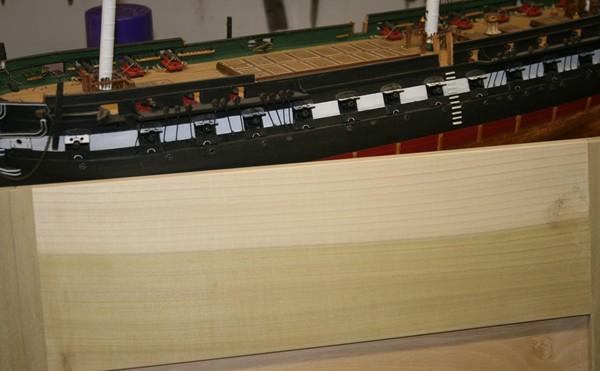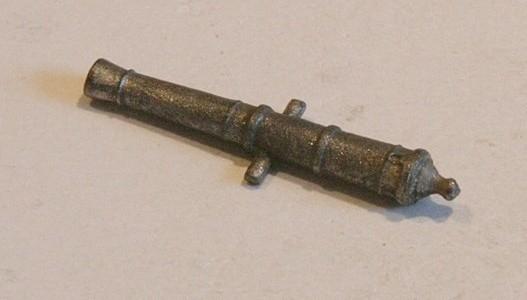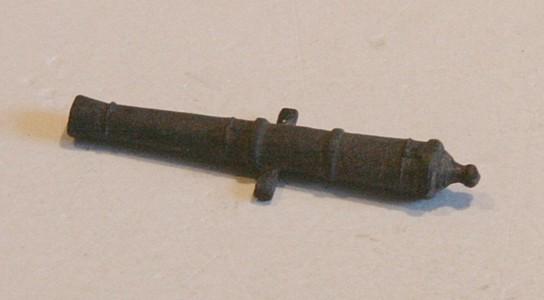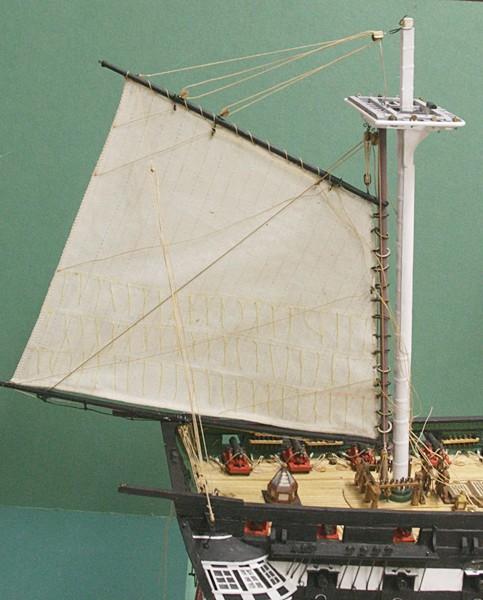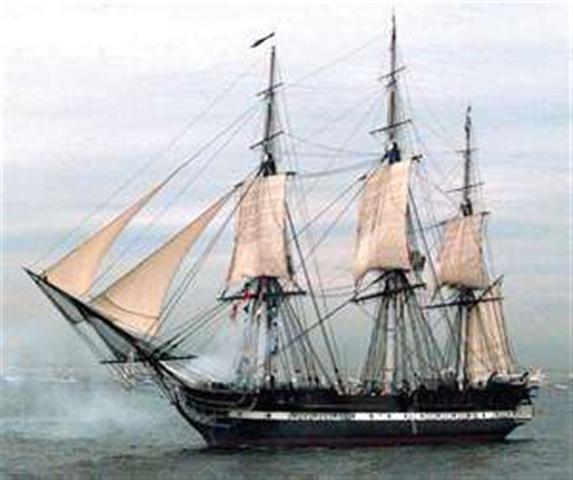-
Posts
1,716 -
Joined
-
Last visited
Content Type
Profiles
Forums
Gallery
Events
Everything posted by Modeler12
-
Thanks Harry, Those look just right and if nothing else I will end up ordering them in Germany. But at least it gives me an idea where to search. Any more input from others in the US would be highly appreciated.
-
California, USA, where the weather is sunny and warm right now. I have not yet had a chance to really search here for those drills. I can get good quality metric drills, but not with the thicker tops. http://www.mcmaster.com/#standard-drill-bits/=lohqky
-
I just bought a used Ryobi scrollsaw from a fellow for $30. I already made some modifications such as a 'no clearance' table top. I use the blades that don't have the two prongs to do that. The saw has a variable speed control and thus far I am able to cut thin plywood without any tear-out on the back side. I think it will serve me well until I feel the need for a better version.
-
Thank you Wefalck. I tried to find out more on the internet and did not come across any sources. I wonder if you can help me find one, even if it is in Europe. I have a local jeweler and may ask him about those drills. And yes, Ian, those cheap drills are ok for gross work but not for precise detailing. That is why I would like to find at least a few with the thicker shaft on top.
-
To stain poplar with a very dark color like ebony would be OK (try it) because the natural color of poplar can vary from light to almost green. It is easy to cut, pretty stable and I use it a lot for furniture projects that are going to be painted (but not for those that are stained). Besides it is easily available in the US by way of Home Depot (no commercial intended). Pardon the background of the picture below, but the wood frame is part of a hallway cabinet that I am making for a friend and I just wanted to make sure part of my Conny was in the picture. I am sure you will agree that the color change in poplar is rather dramatic. This one will be painted white.
-
One more question, Daniel, bitte. I noticed when you drilled the 0.5 mm holes the drill has a thicker top part. That is great, very stable. Where can I purchase those kind of tiny drills?
-
Very good Daniel. I am impressed with your detailed description as well as your craftsmanship. I love it. I can see that this method would be good for me to try on 'sheaves', the ones that go through the hull and are a bit bigger than most blocks. That does not involve all your great details about making blocks but would be interesting to try. Vielen dank.
-
I am sorry that I am not one of the more experienced members, but I would think that the two would be the same. I would say that the author may have been 'lazy' and abbreviated 'cable-laid' (which we all know refers to a "rope' made from three ropes twisted together). I would also say that this kind of 'rope' was used for anchors and not shrouds or stays. Being new to this hobby, I am still confused about the difference between 'yard' and 'crossjack'. Isn't the latter also a yard?
-
Robert, if you go to the thread below (or here http://modelshipworld.com/index.php?/topic/702-coloring-handmade-rigging-line/) you might find the answer from others such as Chuck, our master modeler. I think the easiest way is to dye the rope after it has been made. The dyes penetrate the yarns well enough and probably more evenly if you make the rope first. At least when I dye my rope and yarns (some I use without making them into rope because of the small diameters involved) they don't all come out the same hue. That is fine with me because on real ships they are never the same color due to age and usage. But to blend two different colors into one rope would look odd.
-
I would like to add one more thing To print and even import these kind of books to Holland or even all of the Euro countries (in order to reduce the shipping and import costs) requires VOLUME. These books are not what you see on the New York Times best seller list and I would venture to say that a maximum of ten copies (maybe twenty) of any one of them would be sold in a year. You pay, let's say, 50 euros for one. That is a gross income of 500 or 1000 euros for the publisher. That is peanuts and would not even cover his costs. I am still interested, Chuck, what your estimated completion date is and perhaps Mr Friedman can let me know when I can buy a copy.
-
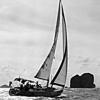
What is the best order of adding sails and spars???
Modeler12 replied to Modeler12's topic in Masting, rigging and sails
Now with two different approaches it leaves me hanging in the wind. What I may do is one of each. The mizzen topsail will be the first and I will rig it with the lighter sail in place to the spar and attach the 'works' to the mast that way. If I encounter the weight problem you refer to, Vince, I will do the other two your way by adding the sails afterwards. But you touched on two topics: one is that you rig the spars to the masts before you even step the mast??? The other is to add the sails afterwards. In the case of my mizzen I cannot do the first because I have the spanker sail and its mast in place. Whow, and I thought rigging would be fun. Actually, the whole process is a puzzle and I like it. -
See if there is a place that does stained glass work. Patina is used to blacken lead cane and solder. It works fine for me. Here is one source http://www.asgs.com.au/chemicals.html To see how I have used it on brass, copper and other metals have a look at: http://www.brentjes.com/Conny%20Deck.html#black Casting after one treatment After two treatments in the mild acid solution
-

coloring handmade rigging line
Modeler12 replied to davec's topic in Rope Making/Ropewalks's Discussions about Rope Making
Mark and Chuck, I wonder how serious this really is!!! I made a small ship model about 25 years ago and dyed the white cotton sails with a tea mixture (and don't ask me what kind of tea it was, but probably Lipton). The model has been sitting on a shelf since then and the sails still feel as soft and healthy as the day I dyed them. I know that acids will harm cotton and tea does have a mild acidic value, but after the dyeing has been done and the cloth is dried, the acid becomes more stable, unless the cotton absorbs moisture again. I agree that using other materials may be advisable, but I also think that using tea for sails, for example, should not be a major concern. Acid free paper is now common, but paper has survived thousands of years without that treatment. The sails I made for my current project uses a very light weight muslin with a beige, natural color. But if it had not been available I would have used a mild tea soak again. Just to be safe, I might have washed the dyed cloth in a slightly alkaline solution afterwards. -

coloring handmade rigging line
Modeler12 replied to davec's topic in Rope Making/Ropewalks's Discussions about Rope Making
Perhaps Chuck has a different approach, but here is what I do to stain long pieces of lines. I work outside along side of the house. I pour some of the stain in a shallow dish, hold the end of the line down in the stain with my finger (plastic glove) and have my wife pull the line gradually along. After about twentyfive feet has been drawn she clamps her end to a tree branch and I do the same at my end. I then take a paper towel and pull it along the line to soak up excess stain. I go by eye sight as to how much I wipe off. The stain dries to the touch in less than an hour. For short sections, made on my ropewalk, I do it all myself and hang the lines off a tree branch. Mind you, I live in California where I can do this nicely even in the winter. -

What is the best order of adding sails and spars???
Modeler12 replied to Modeler12's topic in Masting, rigging and sails
Thanks John. The reason I asked is that when the sail is attached to the yard and then the whole works is places on the mast, there are many lines to deal with and the sail could be in the way. But I can see your point that the reverse could be worse to handle. I am still toying with the idea of attaching some of the running rigging to the belay points on deck first, except, of course, the ones I have preattached to the sails (as shown above). Halyards, clew lines and others that go to belay points around the mast could benefit from that approach. Any suggestions? As I said, this is my first attempt to rig square sails. BTW I still need to add the double blocks for the clew lines to the yard. They are not shown in the picture above. -

coloring handmade rigging line
Modeler12 replied to davec's topic in Rope Making/Ropewalks's Discussions about Rope Making
I made rope on my ropewalk using threads that were recommended here before. Then I dyed some with water soluble stains and thus far they look ok to me. I have been a woodworker for several years and stained many cabinets, etc. Personally I don’t like the common Miniwax products and rely on a water base stain made by General Finishes. http://www.woodcraft.com/search2/search.aspx?query=stains It is easy to use, gives great coverage and stays good in the can ‘forever’. I use the Espresso color for standing rigging and a couple others for the running rigging lines. I might add that Golden Oak is my favorite. I have used it on oak furniture but also like the looks of it on rope for running rigging. The discussion of threads I used is covered in the following site. http://www.brentjes.com/ropewalk.html I hope this helps (or adds to the confusion???). -
I would like to know what to do next with rigging the sails and spars to my Conny. I have made the sails (top mast plus a few others) and never rigged square sails before. I have done some work on the spars and at this point added the jackstays, footropes and some blocks for the various lines that go up from the sides or base of the sail. But I don’t know if I should attach the sail to the spar (in this case I show the mizzen top sail, and it is still loose) and then attach all of this to the mast or wait and attach the sail after the spar is in place. In either case there are a lot of lines to work with. Any suggestions???
-
You might check another thread here on this forum. http://modelshipworld.com/index.php?/topic/334-my-variation-on-lathe/
-
Ok how about this? You pick the book you want to buy, let me know and I buy it for you in the US. I receive it and open the book and look through it, put it in a postal box and send it to you in Europe as 'used book' estimated value $8. Postal rate priority mail $12.35. What and where do the import duties come into play? Would your postman collect? I know this is rather naive, but could it work?
-
Looking great Jeff. I think you are right about skipping the outside details until you have done some of the deck details. I had gone ahead with the gun ports and ended up breaking a couple while doing other things. I did hold off with the channels and chainplates for the same reason and I am glad I did.
-
Thanks Keelhauled. Making the gallery windows took a couple tries. The darn things are slanted, hard to measure and install. In my website section I go into a lot of details about this. But on hind site (and I think I mentioned that somewhere) the window panes could have been made using narrow white tape.
- 732 replies
-
- constitution
- model shipways
-
(and 1 more)
Tagged with:
-

Furled , unfurled or no sails -Preference
Modeler12 replied to Canada Steve's topic in Masting, rigging and sails
Steve I had the same thoughts and settled on the following for my USS Constitution, a war ship. I am in the process of adding six sails. The spanker, jib and flying jib, and the three topsails. It is my understanding that this was one of the usual rigs for ships in battle. Others, such as the main course and perhaps the top gallant sails could be furled, but I decided not to do that because of the extra work and 'busy scene'. There are many paintings of ships in battle and they usually show all sails rigged, but unless there was a slight breeze, that was not usually so because it took too many men to handle the sails instead of the cannons. Here is my first sail installed. Notice I have not yet finished the rest of the mizzen mast at this point, because the shrouds need to go up first. PS. I just remembered the picture below of the USS Constitution after its last overhaul. I think it was when it arrived in Boston. It had the sails rigged as I mentioned above.
About us
Modelshipworld - Advancing Ship Modeling through Research
SSL Secured
Your security is important for us so this Website is SSL-Secured
NRG Mailing Address
Nautical Research Guild
237 South Lincoln Street
Westmont IL, 60559-1917
Model Ship World ® and the MSW logo are Registered Trademarks, and belong to the Nautical Research Guild (United States Patent and Trademark Office: No. 6,929,264 & No. 6,929,274, registered Dec. 20, 2022)
Helpful Links
About the NRG
If you enjoy building ship models that are historically accurate as well as beautiful, then The Nautical Research Guild (NRG) is just right for you.
The Guild is a non-profit educational organization whose mission is to “Advance Ship Modeling Through Research”. We provide support to our members in their efforts to raise the quality of their model ships.
The Nautical Research Guild has published our world-renowned quarterly magazine, The Nautical Research Journal, since 1955. The pages of the Journal are full of articles by accomplished ship modelers who show you how they create those exquisite details on their models, and by maritime historians who show you the correct details to build. The Journal is available in both print and digital editions. Go to the NRG web site (www.thenrg.org) to download a complimentary digital copy of the Journal. The NRG also publishes plan sets, books and compilations of back issues of the Journal and the former Ships in Scale and Model Ship Builder magazines.


